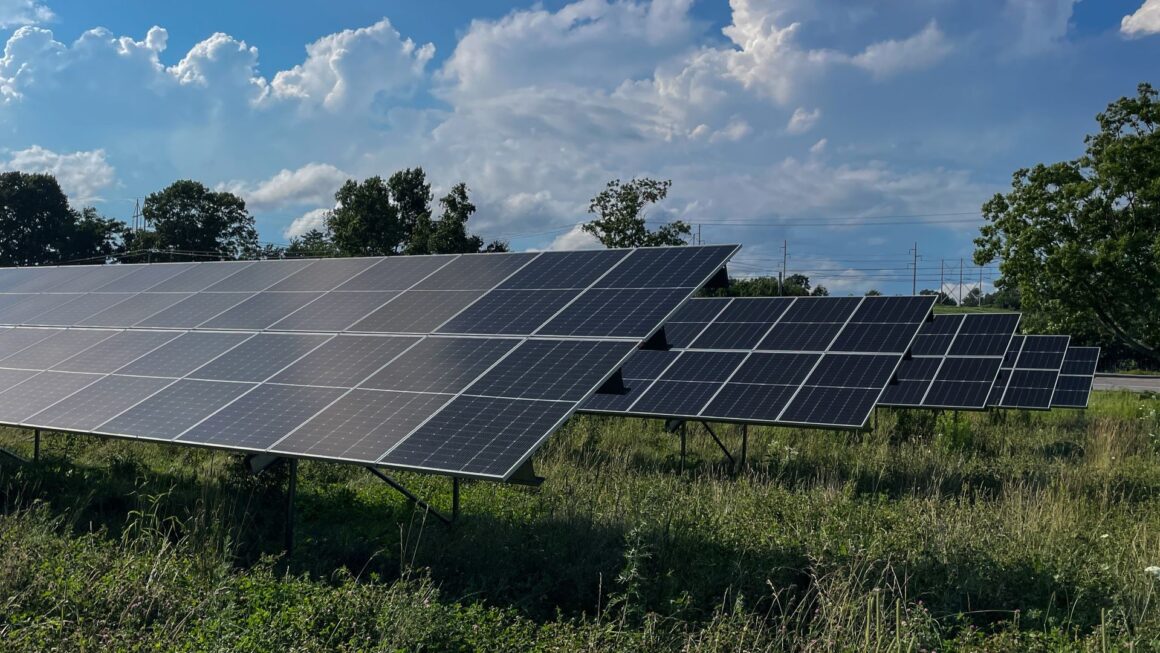Legislation signed by Gov. Janet Mills this month codifies and fast-tracks Maine’s transition to 100 percent clean energy amid growing uncertainty about the future of federal tax credits for renewable energy projects.
The law, L.D. 1868, advances Maine’s previous energy goals by a decade. It requires the state to transition its energy portfolio to 90 percent renewable sources and 10 percent low- or zero-carbon sources by 2040.
In 2023, roughly 65 percent of the energy generated in Maine came from renewable sources.
Lead sponsor Sen. Mark Lawrence (D-York) said the legislation will make the transition by creating new incentives for low-carbon sources in Maine’s energy portfolio, allowing generators like large-scale hydropower and regional nuclear power plants to qualify for energy credits.
“Expanded eligibility to meet Maine’s decarbonization goals and flexibility for new technologies to contribute once they become viable will support the most affordable, reliable portfolio of resources,” Lawrence told fellow members of the energy, utilities and technology committee in May.
The legislation also instructs the Maine Public Utilities Commission to collaborate with other states to negotiate more competitively priced energy contracts that reduce costs for Maine ratepayers.
That directive expands the PUC’s procurement of clean energy sources, transmission capacity and energy storage projects by allowing the commission to work with other states rather than compete with them, according to PUC Chair Philip Bartlett, thereby lowering costs.
“Traditionally, our authority has been very prescriptive. We go out to procure a certain kind of resource at a certain timetable with very specific requirements,” Bartlett told The Maine Monitor. “This is designed to enable us to take advantage of opportunities that could arise in the region, to find cost effective contracting opportunities for Maine.”
The legislation’s new clean energy standard follows recommendations laid out in a state energy plan published by the Governor’s Energy Office last year. Its authors concluded that Maine could reach state climate goals sooner by rolling in these low- or zero-carbon sources and lower electricity rates in the process, creating a new class of credits similar to those awarded in Maine’s renewable portfolio standard.
Proponents say the new clean energy mix will reduce energy costs while ensuring Maine’s grid can quickly dispatch electricity from sources powered by “clean fuels” when generation from renewable sources like wind and solar is low.
Caroline Colan, legislative liaison for the Governor’s Energy Office, testified that Maine’s current renewable energy policies saved ratepayers $21.5 million between 2011 and 2022, while supporting renewables with $100 million in direct investments.
Previous reporting by The Maine Monitor shows that average electricity bills have grown the third fastest in the country, from 12.65 cents/kWh in 2014 to 19.62 cents/kWh in 2024.
How Maine reaches its 2040 goals is far from certain. Expanded directives to bring clean energy sources onto Maine’s grid assume that more renewable projects and transmission lines will be developed over the next two decades, even as federal roadblocks and local challenges arise.
The state has long struggled to meet wind targets, with no offshore wind capacity and onshore capacity of around 1,100 megawatts, despite a 2008 law that set a goal of installing 2,000 megawatts of capacity by 2015.
Maine’s more recent target of installing 3,000 megawatts of offshore wind capacity by 2040 has been further undercut by the Trump administration’s attack on the industry. Federal uncertainty and high construction costs contributed to the pause in development of Maine’s nascent offshore research array, The Monitor previously reported.
Recent efforts to build out the grid necessary for an electrified future have also stumbled: a transmission line bringing hydropower from Canada to New England sparked massive opposition that set the project back years and hundreds of billions of dollars, while homegrown resistance has stalled plans for a 1,000 megawatt wind farm and accompanying $1 billion transmission line in Aroostook County.
Nonetheless, representatives of the renewable energy industry in Maine applauded the more aggressive goals, which they said would expand industry investment opportunities and provide more stability amid Congress’s threat to cut billions of dollars in tax credits for renewable energy projects.
“It’s not just about this renewable energy transition, it’s also about encouraging economic development in the state,” said Eliza Donoghue, executive director of the Maine Renewable Energy Association, a non-profit representing renewable energy producers.
Despite the promising provisions in L.D. 1868, Donoghue said the larger impacts on the Maine renewable energy industry come from three bills passed this session; two that await the governor’s approval and one that’s already been enacted.
The enacted law is L.D. 597 — legislation that requires the Maine PUC to initiate a competitive solicitation this summer for clean energy sources that reduce ratepayer costs.
L.D. 1270 would upgrade the Governor’s Energy Office to a department-level agency and require it to procure new clean energy sources on a fixed schedule if approved by the governor. Donoghue says that procurement schedule signals to the industry that Maine is committed to developing and investing in renewable energy projects.
Where the industry and legislature diverge from one another is L.D. 1777 — legislation that would restructure Maine’s net energy billing program by trimming energy credits for residential and community solar projects while charging them for distribution costs.
While proponents of the bill say it will close loopholes and result in large savings for over-burdened Maine ratepayers, Donoghue and other industry officials fear that its changes will hurt existing projects that have relied on the program’s support.
“The industry… writ large has said that by making those retroactive changes, it is going to make Maine a place where they feel a true lack of confidence in investing in the state,” Donoghue told The Maine Monitor.
The future of these two bills remains uncertain. What is certain are the new marching orders for the Maine PUC outlined in L.D. 1868 and L.D. 597. Bartlett, the PUC chair, said the commission understands the haste needed to procure new clean energy sources and is optimistic about the new avenues the legislation opens to achieve them.
“We know that there’s an urgency,” Bartlett said. “So we will get that out the door as quickly as we can.”
Corrections: Because of an editing error, this article initially described Maine’s wind capacity incorrectly. It has been updated to reflect the fact that Maine has no offshore wind capacity and around 1,100 megawatts of onshore capacity. It has also been updated to clarify that L.D. 597 requires the PUC to do one competitive solicitation of clean energy sources this summer.







